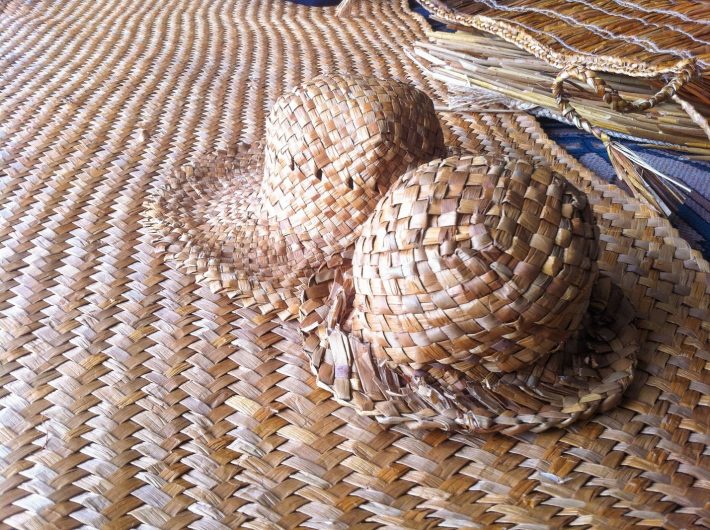Climate change threatens Māori plant use and knowledge
Climate change will likely shift the distribution of culturally important plants, hampering harvests and putting long Māori traditions and knowledge at risk. Scientists have published new forecast maps in the journal People and Nature today.

Local and indigenous peoples play critical roles in preserving biodiversity and ecosystems. Plants may expand or shift their range as global temperatures continue to rise, but if they become inaccessible to the people who use them, ancient biocultural connections could be lost.
“Because of polluted water and soil, invasive species, and habitat destruction people are already having trouble finding the resources they need. Climate change adds another layer to this issue”, said co-author Dr Priscilla Wehi from Manaaki Whenua – Landcare Research.
“Rather than just looking at whether climate change will make species go extinct, we wanted to know how climate change will affect people’s access to plants”, she added.
The researchers focused on two plants that are traditionally used for weaving and as medicine, and that are important to the history and identity of the indigenous Māori people.
Kuta (Eleocharis sphacelata) is a soft, golden sedge found in wetlands across New Zealand and is especially valued in the North Island, where it is weaved into highly priced mats, hats and baskets. Weavers typically return to the same harvesting site each year.
Te Hemo Ata Henare of NorthTec, another author on this study, has been teaching customary Māori weaving for 40 years. She said:
“Members of my community travel up to four hours to harvest kuta. Some of the sites are incredibly difficult to reach because of the overgrown land and involve long-distance swimming and deep diving.”
The team created maps of the plants’ current and future distribution under two climate change scenarios and compared these to known harvesting sites. They found that changes in temperature and rainfall patterns will likely have an impact on soil density in these wetlands. As a result, kuta may become less available in the far north of the country, where many of the weavers who use this plant live, and move to the south instead.
Many of the current harvest sites have been used for generations. Reduced local access to species is typically associated with a loss of biocultural knowledge.
“Weavers prefer to gather plants in their own tribal area, so this becomes an issue”, said Henare. “There are alternative weaving plants available, but the colour, texture, and quality of kuta are unique.”
The second plant species explored in this study is kūmarahou (Pomaderris kumeraho), an endemic shrub that flourishes on well-drained clay soils in the northern regions of the North Island during the austral winter. Māori people use it to treat respiratory ailments.
Cultural currency is still practiced amongst many tribes: Regional species such as kūmarahou may be ceremonially gifted or exchanged with people from other tribal regions. The forecast maps revealed that kūmarahou is likely to expand its range to the rest of the country as temperatures tend to become warmer, rather than shift or decrease as described for many other species. This could have an impact on tribal prestige and gifting practices.
Matthew Bond of the University of Hawai’i at Mānoa said: “Our results show that there are still places where the climate will be suitable for these plants to grow in the future. However, these plants will become less available in places where they are most valued for weaving and medicine. This means that although the species themselves are not threatened by climate change, the human knowledge, history, and use of these plants are.”
Ecological changes like those predicted in this study are a critical issue for indigenous peoples around the world because they transform resource availability and landscapes in ways that affect cultural identity, knowledge, sense of place, and social cohesion.
It may be necessary to transfer important plants to other accessible habitats that have less drastic climate impacts. By doing this, future generations may continue to harvest these plants and maintain their biocultural heritage.
“When it comes to climate change, we should not just think about species extinction, but the relationships between people and nature”, Bond concluded.
“Our hope is that other researchers and indigenous peoples can use our work as a model to study the plants that are important to them.”
The study was funded by the Royal Society of New Zealand and National Science Foundation.
Read full study:
Bond MO, Anderson BJ, Henare THA, Wehi PM. Effects of climatically shifting species distributions on biocultural relationships. People Nat. 2019;00:1–16. DOI: 10.1002/pan3.15
This study is published in the first ever issue of People and Nature. All articles are free to read here.
Media contact:
Sabrina Weiss, Press Officer, British Ecological Society, Email: press@britishecologicalsociety.org, Tel: +44 207 685 2523
Like what we stand for?
Support our mission and help develop the next generation of ecologists by donating to the British Ecological Society.